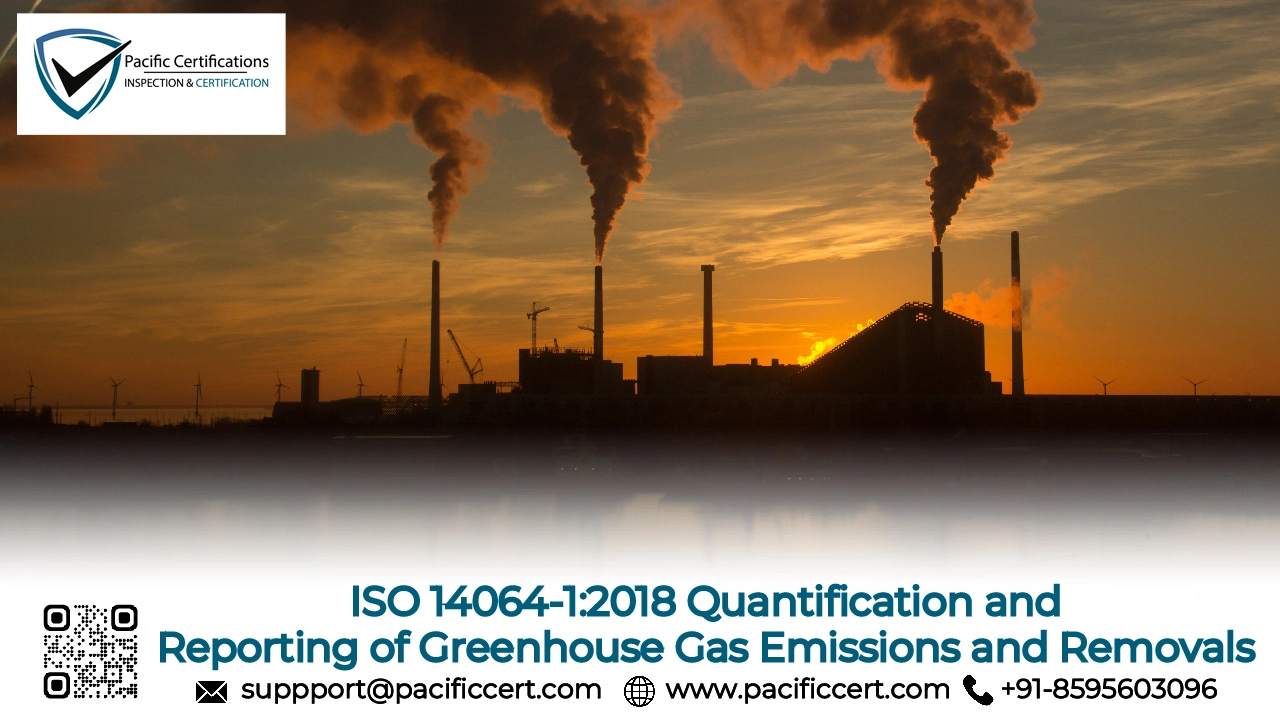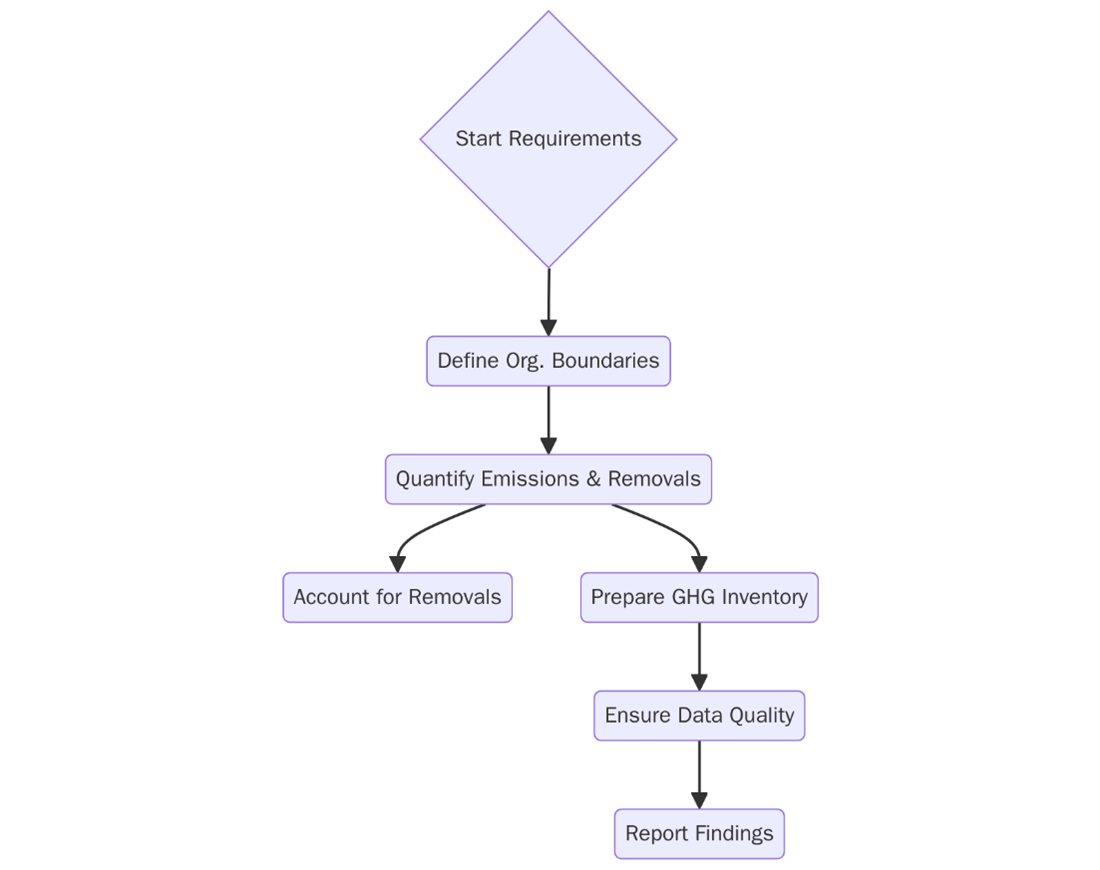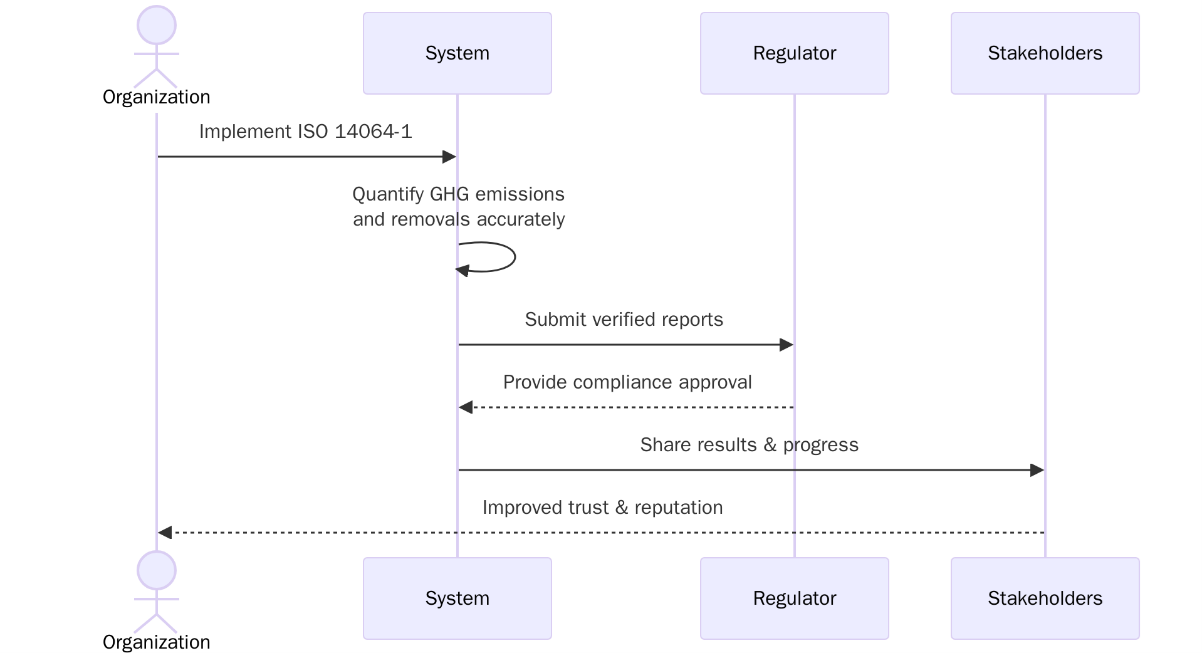What is ISO 14064-1 Quantification and Reporting of Greenhouse Gas Emissions and Removals?

ISO 14064-1:2018 is part of the ISO 14060 family of standards dedicated to climate change mitigation. Specifically, this standard provides principles and requirements for quantifying and reporting GHG emissions and removals at the organizational level. This version (2018) supersedes the previous 2006 edition and introduces critical enhancements that reflect modern-day sustainability and climate reporting requirements.
The standard aims to:

- Enable consistent and transparent GHG inventories
- Enhance GHG data credibility and comparability
- Support GHG management and reduction strategies
- Facilitate participation in emission trading schemes and climate programs
By adopting ISO 14064-1:2018, organizations not only demonstrate environmental responsibility but also fulfill market, investor, and regulatory expectations for climate transparency.
How Pacific Certifications Can Help with Audit & Certification?
As a recognized certification body, we at Pacific Certifications specialize in assisting organizations to meet the rigorous criteria of ISO 14064-1:2018. Our approach is tailored, transparent, and fully aligned with international best practices.
Here’s how we support you:
- Pre-Certification Gap Assessment: Identify areas of non-conformity and readiness.
- Training and Capacity Building: Workshops and customized sessions to ensure team alignment.
- Documentation Support: Guidance in preparing compliant GHG inventory, boundaries, and methodologies.
- Third-Party Audit: Independent verification of your GHG data, management approach, and records.
- Certification Issuance: On successful audit, issuance of ISO 14064-1:2018 certificate with global recognition.
- Ongoing Surveillance and Recertification: Annual checks and recertification audits to maintain compliance.
By working with us, you gain access to experienced auditors, streamlined certification processes, and valuable insights that enhance your environmental governance.
Requirements of ISO 14064-1
To achieve certification, organizations must meet specific requirements across several key areas:

Organizational Boundaries
Entities must define the scope of their operations, facilities, and activities to be included in the GHG inventory. ISO 14064-1:2018 allows for both control-based (financial/operational) and equity-share approaches.
GHG Emission and Removal Quantification
Quantification must be based on sound methodologies that align with accepted science and include direct emissions (Scope 1), indirect emissions from energy (Scope 2), and optionally, other indirect emissions (Scope 3).
GHG Inventory Preparation
An accurate inventory must include:
- Emission sources and sinks
- GHG types (e.g., CO₂, CH₄, N₂O, HFCs, PFCs, SF₆)
- Base year selection and recalculations (if necessary)
- Methodological choices and assumptions
GHG Data Management
Organizations must establish controls to ensure data quality, transparency, and completeness. This includes clear roles, responsibilities, and quality assurance procedures.
Reporting and Documentation
Reporting must be consistent, transparent, and complete. It should detail methodologies, emission factors, sources, and changes in data or structure over time.
Validation and Verification
Independent validation or verification is encouraged to enhance the credibility of reported data—this is where our third-party audit services are crucial.
Benefits of ISO 14064-1
Adopting ISO 14064-1:2018 yields both tangible and intangible advantages:

- Regulatory Compliance: Meet mandatory reporting obligations and environmental legislation.
- Investor Confidence: Demonstrate ESG performance for stakeholders and funding bodies.
- Operational Efficiency: Identify high-emission processes and opportunities for cost-saving.
- Market Access: Align with international climate programs and carbon markets.
- Reputation Management: Showcase commitment to climate action and corporate responsibility.
- Decision Support: Enable informed strategic planning through robust GHG data.
- Risk Management: Understand carbon liabilities and mitigate climate risks.
- Customer Trust: Reinforce environmental stewardship in B2B and B2C communications.
Who Needs ISO 14064-1?
This standard is applicable across sectors and organizational types, including but not limited to:
- Corporations and Conglomerates: Especially those with complex supply chains and global operations.
- Government Bodies: Municipalities and public sector institutions tracking emissions.
- Manufacturing & Industrial Firms: High carbon footprint industries (cement, steel, energy).
- Service Providers: Logistics, consulting, and IT companies pursuing sustainability goals.
- NGOs & Non-Profits: Environmental groups advocating transparent reporting.
- Financial Institutions: Banks, funds, and insurance firms addressing ESG compliance.
- Educational Institutions: Universities and colleges aligning with sustainability pledges.
Essentially, any organization aiming to improve its environmental performance or participate in carbon reporting schemes will benefit from implementing ISO 14064-1:2018.
Conclusion
ISO 14064-1:2018 represents more than a guideline—it is a strategic imperative for organizations navigating a carbon-conscious world. Through consistent, transparent, and verifiable GHG reporting, organizations can lead by example, build stakeholder trust, and unlock value in sustainability.
We at Pacific Certifications are your trusted partners in this journey. From initial assessment to successful certification, our audit expertise ensures you meet every requirement with confidence and clarity.
FAQs
What is the difference between ISO 14064-1 and ISO 14064-2?
ISO 14064-1 focuses on the organizational level, while ISO 14064-2 targets project-level emissions reductions.
Is ISO 14064-1:2018 mandatory?
No, it’s a voluntary standard, but it is increasingly required by regulatory agencies, investors, and international partners.
How long does certification take?
Depending on the size and complexity of your organization, it can range from 3 to 6 months, including audits and documentation.
Can ISO 14064-1:2018 be integrated with ISO 14001?
Yes. ISO 14064-1 complements ISO 14001 by adding depth to environmental performance quantification and reporting.
Do we need to report Scope 3 emissions?
Scope 3 reporting is optional but highly recommended for organizations aiming for full transparency.
How often should the GHG inventory be updated?
Annually, or more frequently if major structural or operational changes occur.
Ready to get ISO 14064-1 certified?
Contact Pacific Certifications to begin your certification journey today!
Suggested Certifications –
Read more: Pacific Blogs






